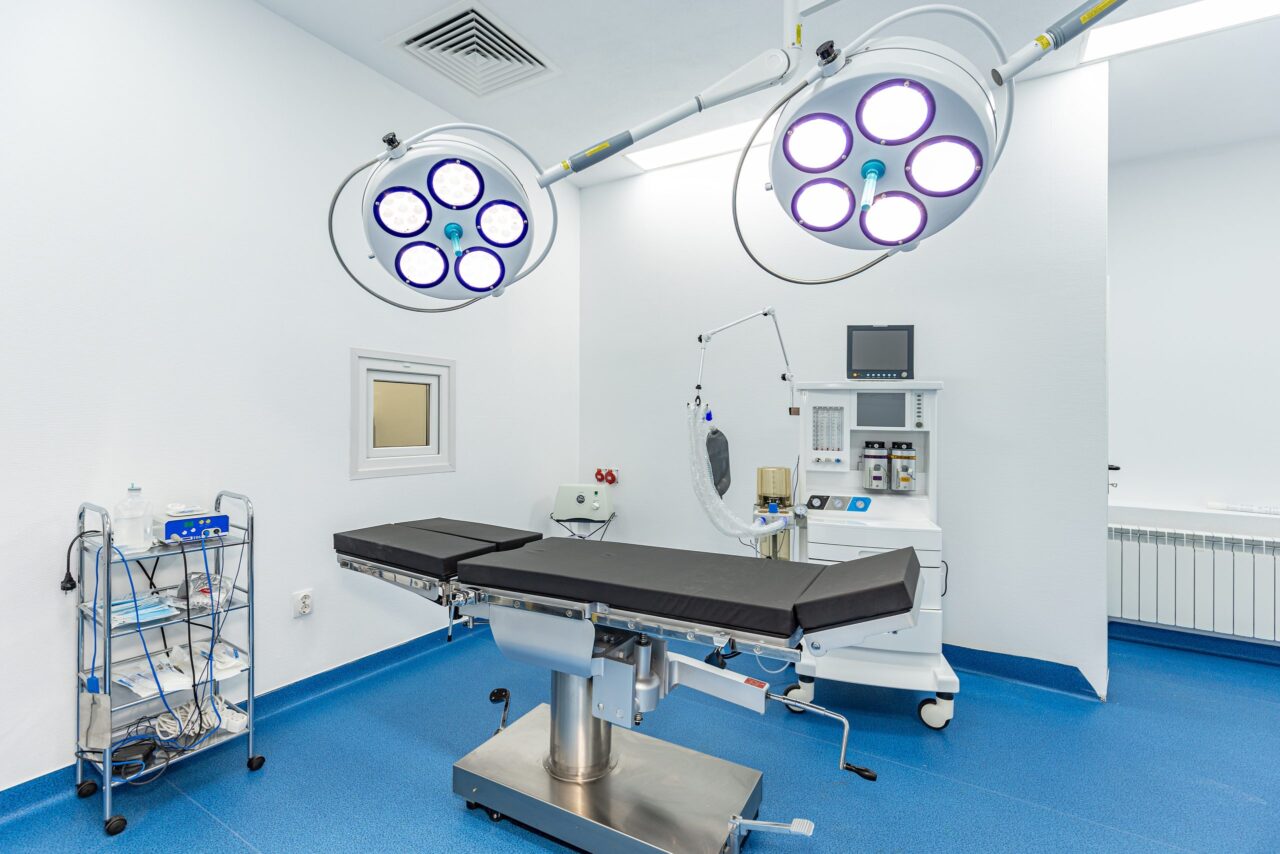The operating tables are specialized tables used in operating rooms to position the patient during a surgical intervention, facilitating the positioning of patients during different surgical procedures, and allowing the surgeon to have good access to the surgical field.
These equipment have a design and structure that allows the surgeon to carry out the appropriate surgical maneuvers to obtain a successful surgical intervention and a faster and uncomplicated workflow. The operating tables are extremely useful elements within the operating room, as they fulfill the function of facilitating the surgical approach, placing the patient in the best position relative to the surgeon.
How is an operating table set up?
An operating table has a main platform, on which the patient can sit or lie down as needed, and a central base that allows the height and inclination of the table to be adjusted.
The standard surgical table has postural controls so that it can be manipulated, flexed or extended to the desired position. Some tables have a metal cross bar or a body lift between the two upper sections that can be raised for gallbladder or kidney interventions.
Classification of operating tables
The operating tables are classified into universal operating tables and special operations tables, which in turn are classified into different models, according to the medical specialty for which it is used. Universal operating tables are used for general, digestive and minor surgery. They are teams that adapt to most cardiovascular, bladder, cosmetic surgery interventions, among others. Special operations tables are used for one or more medical specialties and are characterized by special configuration and accessories.
There is another classification, in which we find the general surgery tables who have a fixed height that comes in contact with the floor and two crossbars that are regulated according to need, the orthopedic tables that are lower than the general surgery tables, which allows it to be more suitable for bone and joint operations, in addition they enjoy greater stability so surgeons can use stronger tools, and the radio lucid imaging tables, manufactured to allow X-rays and other tools and equipment used in obtaining images to pass through the surface of the table allowing easier capture of the images.
Types of operating tables
Universal surgical operation tables
They are used for general, digestive and minor surgery. They are very versatile and adaptable to most interventions such as cardiovascular, bladder, cosmetic surgery, among others. In this category we find several models:
- JT-1 surgical table: Used in head, neck, abdomen, chest, leg operations, general surgery, as well as urological surgery.
- JT-2A surgical table: Used in general surgery and specialized surgical procedures. They have a special board, laminated high pressure that allow a radiological examination.
- DT-12B Surgical Table: It serves as a multipurpose table, for abdominal and thoracic surgeries, gynecological and obstetric surgeries, brain among others.
Special surgical operation tables
They are operating tables for one or more medical specialties. They are characterized by their specific configuration and accessories. For example:
- Gynecological surgical tables: They allow a seated or decubitus position, with Göpel-like leg rests. They’re ideal for the patient who’s in labor. They are usually composed of two separate tables, one for the body and one for the legs.
- Orthopedic surgical tables: They usually allow resting legs and traction racks. They are designed to facilitate intervention and maneuverability and allow the surgeon to easily displace the patient.
- Ophthalmological surgical tables: They are convertible tables with a specific head restraint for patient positioning.
What do we offer you in Kalstein?
Kalstein is a company MANUFACTURER of medical equipment of the highest quality and the best technology at the best PRICES in the market, so you can make your PURCHASE with us, knowing that you have the service and advice of a company specialized in the field and committed to innovation. This time we present our impressive Operating Table YR02153 a truly universal operating table, offering effective solutions for the widest variety of requirements in the operating room. It is an ideal operating table that can be used in general surgery, thoracic surgery, obstetrics and gynecology, orthopedics, urology, brain surgery and otolaryngological surgery. Among its main features we can mention:
- Longitudinal displacement of 350 mm: adding more space for the C-arc in X-ray imaging surgeries, such as cardiosurgery, orthopedics, ERCPs.
- Dual rear plates: the kidney lift structure can be accessed by double rear plates, with adjustable height of 0-105 mm.
- Stable base in valley form: the solid and stable valley-shaped base is suitable for low-position MIS surgeries, such as plastic surgeries, neurosurgery and ophthalmic surgery.
- Alternative pedal control: it provides more convenience and efficiency, especially in laparoscopy and endoscopic surgery.
- Override Control: the back-up control panel in the column provides more security in power supply disruption.
- Table height adjustment range of 500 mm: HFease600 is universally applicable, and especially suitable for neurosurgery, otolaryngology in the low height position of 600 mm.
- Intuitive handle control: adjustment of table height and positions, including backplate, using backlit keyboard
For more information you can take a look HERE

